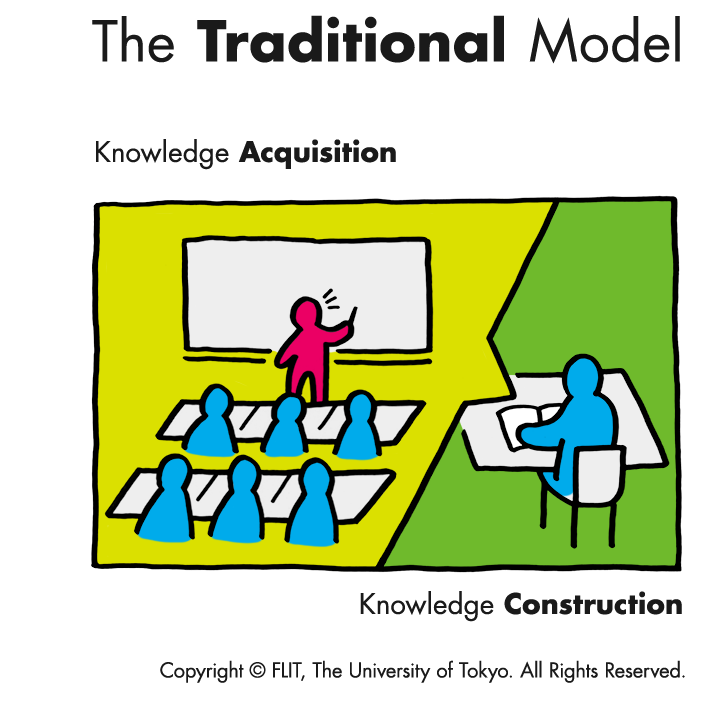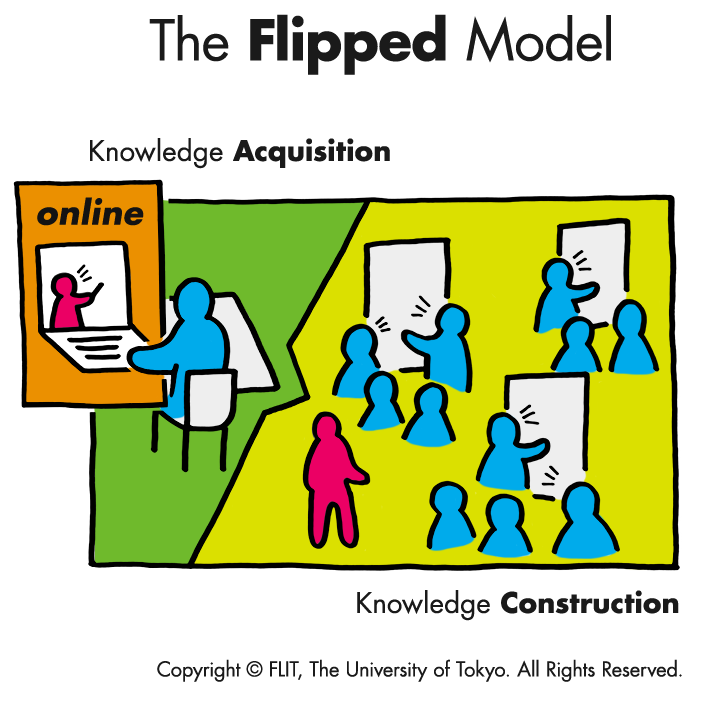About

About Flipped Learning Technologies
In the 21st century, it is critical for people to develop higher-order thinking skills to successfully evaluate and apply knowledge in their work and everyday practices. However, the limited time of classroom instruction creates a challenge for educators to provide enough time and opportunities for students to engage in interactive and collaborative activities that allow them to practice such high-order skills.
Flipped LearnIng Technologies (FLIT) was a research program aimed at designing and researching blended learning environments that apply to both face-to-face activities and online spaces. Having students watch video-recorded lectures online outside the classroom makes it possible to engage students in the interactive and collaborative activities that develop their high-order thinking skills.
Our research team explored the rearrangement of time and space to enhance learning experience by shifting the instructional principle from “providing instruction oriented toward the classroom” to “changing the classroom to enable meaningful learning.”
What is Flipped Learning?
Flipped Classroom and Flipped Learning
Since the late 2000s, the term “Flipped Classroom” has spread from grassroots level to primary and secondary school educators in the United States. It is an instructional approach that uses video-recorded lectures as homework assignments in basic topics for students to watch at home, and then engages them in interactive and collaborative activities such as one-to-one tutoring and project-based learning in the classroom. In traditional instruction, most class time is spent on content presentation by lecture-based instruction and it is hard for teachers to ensure enough time to engage students in advanced tasks where they can apply their knowledge in disciplinary contexts. The flipped model allows interactive and collaborative activities for developing high-order thinking skills by transferring content delivery online before class. Since 2012, this approach has gradually also attracted attention among Japanese educators, including higher education and business training professionals. In FLIT, we use the term “flipped learning” instead of “flipped classroom” to envision the use of such a flipped model not only in formal education but also in informal learning.


---
+++

Flipped Learning FAQ
How does the flipped model differ from traditional at-home preparation?
One major characteristic of flipped teaching is that students are provided with instruction equivalent to traditional lectures before class. In this regard, traditional at-home preparation such as reading textbooks and working on worksheets differs from the flipped model in which both learning materials and instructive explanations are provided by video lectures.
What would you do for students with no access to the Internet at home?
It is essential to ensure that all learners have access to online learning materials for flipped learning, but some students may not have that opportunity for a variety of reasons. In their model, Bergmann and Sams provided DVDs of lecture recordings to students who had no Internet access at home. It is a challenge for educational institutes like universities to provide alternative options and environments (e.g., learning commons) where students can use computers freely.
What type of effect can be expected by adopting the flipped model?
Teachers and schools that have adopted the flipped model (Bergmann & Sams, 2012; Fulton, 2012; Prober & Heath, 2012; PBS, 2013) reported various effects such as those below, yet there is insufficient scientific data to support the effectiveness of the model.
- Dropout rates decreased or pass rates increased.
- Student course assessments improved.
- Student grades increased.
Does the flipped classroom only work for advanced students?
Teachers and schools that struggle with dropouts and poor academic performance have reported that their dropout rates decreased and student performance improved after applying the flipped model. In particular, one-to-one tutoring and peer instruction will help struggling students by providing them with interactive learning opportunities.
